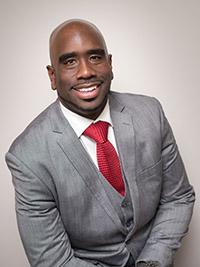How healthcare finance organizations are working to become more resilient
Hospitals and health systems continue to face stiff financial pressures. Overall hospital expenses increased by 17.5% between 2019 and 2022, according to a report from the American Hospital Association. This increase far outpaced Medicare reimbursements, which only increased 7.5% during the same period.
Healthcare leaders are seeking and finding new ways to tackle the ongoing challenges of financial management in this environment. For example, the rise of AI technologies offers promise for organizations to access top performance, regardless of their size. However, many healthcare institutions continue to struggle with determining the best solutions to meet their financial challenges.
In this HFMA Executive Roundtable, seven healthcare financial executives share their strategies for tackling the challenges of financial management in the current environment.
In the current environment, how do you balance activities focused on cost reduction and those that can potentially increase revenue?
Sheldon Pink: Cutting costs won’t solve the problems. It has to be a compendium of different approaches. In Maryland, many hospitals have just cut labor, setting themselves up for failure. Last year, staff reductions backfired at Luminis because of attrition, and with fewer people, we ended up with many overtime and vendor costs that inflated the budget.
Monica Hoch: Historically, we tried staff reductions, but we saw that it’s not really the answer. We’re looking at ways to improve productivity for the staff we have, such as point-of-service collections and focusing on days to bill. We’re also standardizing processes and efficiencies.
Kenneth McCosh: If you cut staff, you don’t have the resources you need to do revenue diversification and strategic initiatives, and there’s always a hit on morale. A reduction in force is always our last measure because it has ripple effects: Turnover goes through the roof and contract labor goes through the roof.
We’re focused on revenue diversification and process automation. It’s not as much about cutting costs but about growing the revenue stream and keeping the cost structure the same, while at the same time generating economies of scale by leveraging AI and technology.
Ashley Hill: Most of our activities focus on margins to cover the cost of support to our physicians and employees, rather than just cost reduction alone. We’re acquiring different specialties that increase revenue opportunities, like anesthesia. We brought anesthesia into our facility and we’re billing on the provider’s side. We’re thinking differently from the community clinics around us and trying to bring that revenue in and keep the focus on supporting our employees and physicians who provide the care to our patients.
One thing we’ve learned post-COVID is that the new provider environment doesn’t work the same as pre-COVID. Providers may ask for more benefits and more flexible hours. You may have to add more providers to still get the same amount of patient coverage. We’re trying to identify how we can utilize shared services to optimize cost savings.
Elise Myers: Outside of revenue cycle work, we’re looking at all kinds of things, such as real estate: What are our real estate assets? Are they productive or not? We’re looking at other diversification of revenue such as building an externally facing revenue cycle organization so that we’re not just bringing in revenue for ourselves but actually selling our solutions.
In addition to our nonprofit organization, we also have a for-profit part of our company that allows us to do some different things, like acquiring technology companies that would have been a vendor before and instead, we now own them. That allows us to take advantage of services, knowledge, data analytics and research and development we would otherwise have to pay to an external organization.
Ninety percent of economic growth in the healthcare space comes from labor, but leveraging technology can help human labor accomplish exponentially more. What investments are you making around automation and AI?
Pink: One of the biggest challenges is that healthcare was not on the same level as everybody else with technology talent. That talent just doesn’t exist across the board. We have trouble implementing our EHR. The people who do [technology integration] in other industries are paid much higher than in healthcare.
Richard Nagy: The tech workforce has become a revolving door. Specialized programmers and designers are in constant demand; therefore, you’re constantly reintroducing new tech talent to the organization. Many are gone before you really know they’re there.
Myers: Some health systems are investing in internal technology development. For example, Providence is developing bots internally, with scripting for eligibility, claims status and validation, but you have to have a team that can constantly update and maintain.
AI is something people have to start looking at because it’s going to be part of our reality. Epic has some limitations on what they allow you to do in Epic, but there are a lot of things you can do outside Epic. For things like coding, we have to look at those technologies and figure out how to make them work for us and be able to pull data out of that solution and then put data back into Epic, even though the processing or transaction may happen outside of Epic.
Bradford Kuntscher: It’s useful to separate two different types of business problems and the type of AI that supports them. First, AI supports rote, repetitive tasks that don’t require a great human cognitive load. Those are the areas where you see AI potentially displacing workers and slowing the growth of labor costs.
The space that we operate in is a more complex, clinical space, which is more focused on augmenting the role of current workers, generating more yield so they can produce two to three times as much in the same amount of time. This AI work requires clinical judgment in areas like documentation, evidence and coding.
We need to increase literacy around this topic; the C-suite needs to be able to discern what’s helpful and what’s not. Some large companies promise the moon; it’s a red flag when you see an overarching panacea promise of AI, when really, it’s worth paying more attention to more discreet business applications with proven efficacy.
Hill: The important thing is partnering with an organization that can help you navigate AI and automation throughout your journey. It’s a long-term relationship you can build on. While the technology partner is building their knowledge base, we can focus on what we need to do in the clinical space, knowing that we have that partner that is training people and can come in and look at our process and help us find value.
How do you evaluate AI solutions?
McCosh: It’s about getting that road map that says, “Ok, we start here, but here’s how we progress and get the technology into core areas.” We need a progression rather than too much at once.
It’s about finding a partner that knows what’s going on with AI. They may not be able to provide everything you need, but they may know others who can, and they can help guide you through the process.
Pink: Assess before you invest. Everybody’s on a different technological journey. A company may be able to provide small wins for one organization but not for another. It’s understanding where you want to go with what you have. And it’s important to have IT at the table with you when making decisions about new solutions.
Kuntscher: We can usually quickly tell whether an executive team knows how to evaluate an AI partner based on the quality of the questions they ask. The quality of the questions we hear is a good litmus test for the value of the partnership.
Some good questions to ask a potential AI partner include:
- What is the discreet business problem that you are uniquely equipped to solve?
- How good are your predictive models? On what data were they trained and what were the results?
- At what point in the clinical process can you make predictions? (If a tool can only predict sepsis late in a hospital stay, that’s not very useful.)
Healthcare facilities have experienced a 20% increase in denials since 2016 and an 11% increase in denials since COVID. What are your strategies for combating denials?
Hill: You can’t work denials one by one anymore. It has to be project-based, you have to find the trends quickly and be able to take them back to the managed care team. We have team members looking for trends that are influencing denials.
For example, we found that a large insurance company implemented a new policy where they are downgrading [evaluation and management] E&M levels, which is leading them to deny claims. With all these claims, you can resubmit appeals if you have someone pull the right patient chart supporting the original billed E&M. When we submitted the appeals and documentation, 85% got overturned, but it takes time and manpower to pull the charts and resubmit. We don’t have enough people to fight on every single one. We have to stay on top of their changing policies and get in front of those changes.
Pink: Our payers are very slick. They will send back incorrect codes; a medical necessity issue could actually be an authorization issue. We’ve started leveraging vendors more to look at charts and figure out what went wrong. When you find breaks in the process you can capture trends with payers. Also, you may have to review your internal reason codes to fit new payer policies. When you find out what the true reason code is, you can track it and build reporting around it.
We break down denial prevention into seven different categories and meet separately with each team, such as oncology, clinical, emergency, etc. We dissect their workflows and find trends.
Myers: You need to be able to trend your denials data. For example, payer X may use code 123 but what they really mean is XYZ. We built an internal tool that looks at payer-by-payer behavior, not just denials but other things too, and we’re working with payer contracting because we really need to have the right terms in the contract to make sure we can argue and appeal for medical necessity when the payer denies for lack of authorization or other reason resulting in a non-covered service.
We have so much data, and we have to be as sophisticated as the payers in understanding that data. Even as the big systems, we don’t have that level of sophistication. That’s why we need AI; we can’t manually read every chart for every denial.
We also work with clinical departments to help prevent denials. Some clinical providers unintentionally take actions or use words that result in denials. One doctor at Providence used the word “observe” in the chart, although he was referring to monitoring an inpatient. The payer fought us tooth and nail because of the word “observation.”
Kuntscher: That’s where there’s room for technology, interpreting what was written down and interpreting the clinical situation with the patient in reconciling those. You might have a level of documentation or code that was unsupported by the level of clinical evidence, and you want to close those clinical validation gaps pretty quickly. The best way to deal with denials is preventing them from happening in the first place and then getting the observation status right. That’s another place for AI to play a role.
For hospital revenue leaders like these, AI technology offers promise for helping reduce denials and increase collections and revenue. As financial challenges continue, AI technology offers opportunities to leverage health system data to boost the bottom line.
Panelists

ASHLEY HILL, MBA, CHFP
Executive director of accounts receivable at Wellstar Health System, in Marietta, Georgia

MONICA HOCH, MBA
Associate vice president of revenue integrity at Providence in Irvine, California

BRADFORD KUNTSCHER
Product specialist at Iodine Software in Los Angeles, California

KENNETH MCCOSH
CFO at Alivia Care, Inc. in Jacksonville, Florida

ELISE MYERS, MBA
Vice president of clinical revenue integrity at Providence, in Seattle, Washington

RICHARD NAGY
Vice president of managed care at Allegheny Health Network in Pittsburgh, Pennsylvania

SHELDON PINK, MBA
Vice president of revenue cycle at Luminis Health in Annapolis, Maryland
About Iodine Solutions
More than 800 hospitals across the United States use Iodine Solutions to make sense of their data and use it to solve mid-revenue cycle challenges, boosting collections and reducing denials. With Iodine Software, hospitals capture an average of $1.5 billion in additional, appropriate reimbursements annually. Learn more at IodineSoftware.com.
Iodine is an enterprise AI company that is championing a radical rethink of how to create value for healthcare professionals, leaders, and their organizations: automating complex clinical tasks, generating insights and empowering intelligent care. Iodine’s powerful predictive engine complements the skills and judgment of healthcare professionals by interpreting raw clinical data to generate real-time, highly focused, predictive insights that clinicians and hospital administrators can leverage to dramatically augment the management of care delivery – facilitating critical decisions, scaling clinical workforces through automation, and improving the financial position of health systems. For more information, please visit iodinesoftware.com.
This published piece is provided solely for informational purposes. HFMA does not endorse the published material or warrant or guarantee its accuracy. The statements and opinions by participants are those of the participants and not those of HFMA. References to commercial manufacturers, vendors, products, or services that may appear do not constitute endorsements by HFMA.






